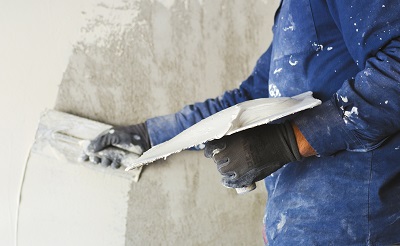
Anyone who is new to plastering might be forgiven for thinking that it’s simply all about sticking a load of plaster on a wall and smoothing it flat, but anyone with a bit more experience will know that not bothering with the bits before this part can mean the road to disaster.
One of the most important stages of plastering is the preparation before you put the plaster on the wall. It’s vital to know what levels of suction you’re dealing with, for example, so you can ensure that when the plaster goes on, it’s going to stay that way and won’t dry too fast or come away from the wall.
When you are preparing walls for plastering there are several steps you can take to test the suction, whether you’re working with a previously plastered or painted background or a properly prepared and well scratched backing coat. If you’re plastering onto plasterboard then you don’t need to worry so much about a suction test as the paper on the board will do the job for you.
High or low?
Simply put, if your wall is high suction it means it’s too porous and any plaster you put on the wall will have all of the moisture sucked out of it, leaving it too dry before you’re ready to flatten it out. It doesn’t matter how great your technique might be, if you’ve not got plaster you can work with then you don’t stand a chance. An easy solution to this, after you’ve discovered your wall is high suction, is to apply water evenly to the wall before you begin.
Similarly, if the wall is low suction or previously painted or plastered, the adhesion could be poor, meaning the plaster will struggle to stick to the wall and this is where you might find layering on PVA before the plaster can help. Bear in mind that a couple of thinner layers of PVA are better than one thick one as, if it’s too thick, it could be likely to peel off. Thinner layers of PVA will also mean more is absorbed into the wall. It’s worth noting here that to ensure even better adhesion with your PVA, you can mix a handful of sand in with it to create a rougher surface.
The big test
The suction test doesn’t have to be a massive challenge. To check the suction of your wall, load a small amount of plaster onto your trowel and smooth it over a small area of the wall at about 2mm in thickness. See how fast the plaster dries. If it’s still as wet as when you put it on after 2-3 minutes, then the wall isn’t high suction and won’t need soaking with water or layers of PVA, but if it has dried considerably, then it will.
Need more advice? Contact Us
If you’re looking to begin a plastering job and are unsure of the tools you need, or the right processes, then feel free to get in touch with a member of our team today who would be happy to help.

